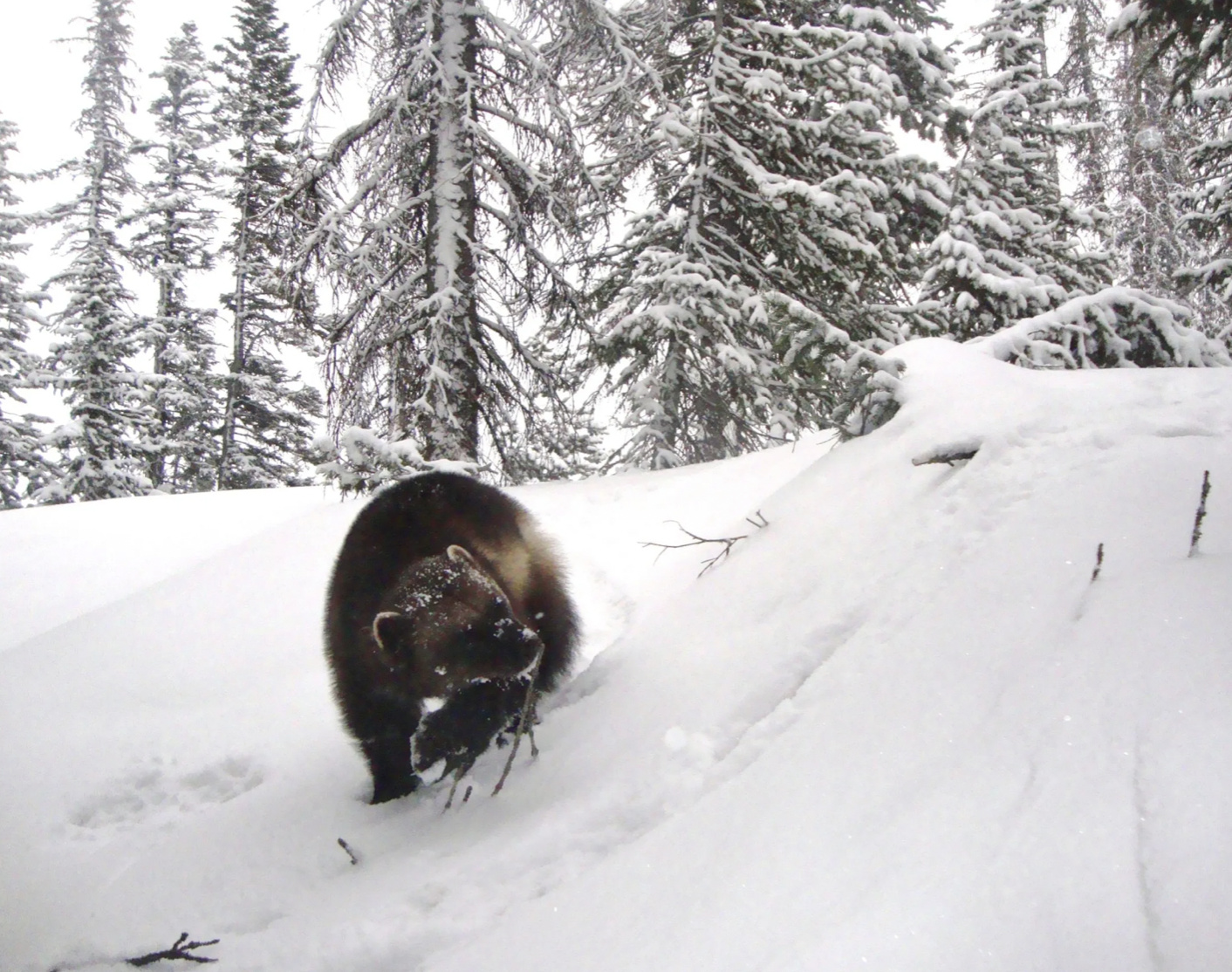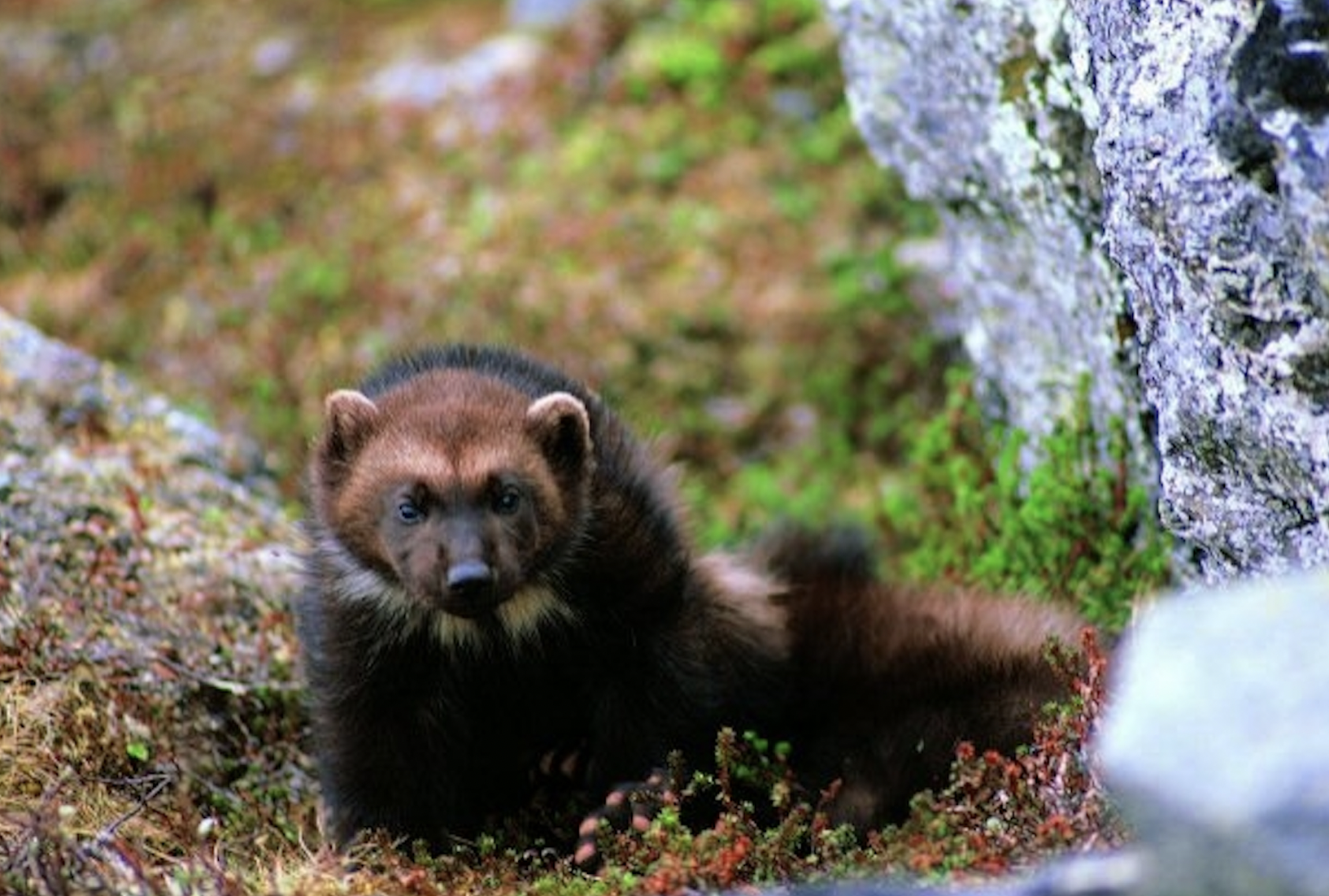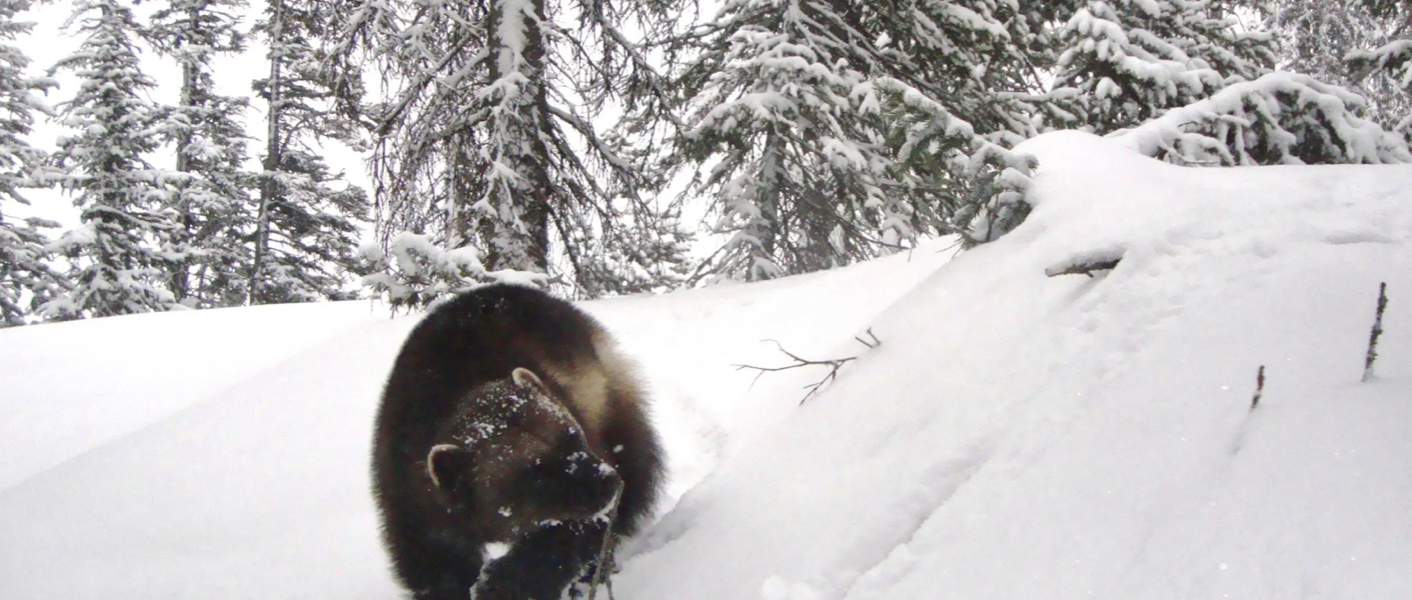Endangered Species Act protections for wolverines likely imminent

• State surveys don’t placate federal biologists who say the Lower 48 population is ‘less secure’ than previously thought.
By Mike Koshmrl, WyoFile.com
An analysis of wolverines in Wyoming and the rest of their Lower 48 range paints a grim picture of a low-density species that’s losing its habitat and facing an uncertain future.
The U.S. Fish and Wildlife Service published a 100-page “species status assessment” for North American wolverines in late September. That document presages a final determination that federal wildlife managers must make by late November to satisfy a May 2022 federal court order.
The assessment’s closing paragraph hints at what’s likely to happen: Wolverines will no longer be a state-managed species, and instead will be entrusted to federal managers and the protective guidelines of the Endangered Species Act.
“Overall, future wolverine populations in the contiguous U.S. may be less secure than we described in our 2018 [assessment],” the document reads. “Uncertainty over the wolverine’s future condition in the contiguous U.S. is relatively high.”
Wolverine ecology is plagued by unanswered “key questions” about the population size, gene flow and dispersal corridors across the Canadian border, the assessment states.
“Nevertheless, the best available information suggests that habitat loss as a result of climate change and other stressors are likely to impact the viability of wolverines in the contiguous U.S. through the remainder of this century,” the document says in its closing sentence.
In an email, Fish and Wildlife Service officials acknowledged that a jurisdiction change for wolverines is likely weeks away.
“The Service’s 2013 proposed rule to list wolverines as threatened in the lower 48 states is the current proposal,” Amanda Smith, a Fish and Wildlife public affairs officer, wrote. “Our final determination will be submitted to the Federal Register by November 27, 2023 as required.”
The wolverine is a 17- to 40-pound member of the mustelid family that is notoriously reclusive. That’s because the alpine critters often dwell amid rock, ice and snow at very low densities. The Teton Range, at one point, had a documented population of one, an animal nicknamed Jed.
Conservation advocacy groups have pushed for a federal wolverine listing for decades, and the species’ classification has been the subject of repeated litigation. States, including Wyoming, have opposed classifying Gulo gulo under the Endangered Species Act in the past, though the scarce mustelid’s whereabouts in designated wilderness and other highly protected lands suggests a listing would have a limited effect on federal land management.
Fish and Wildlife’s decade-old proposed listing rule, reignited by U.S. District Court Judge Donald Molloy’s order, estimated a population of 250 to 300 animals in the Lower 48. The latest assessment, however, doesn’t make an estimate.
“Systematic surveys to obtain population estimates have not been attempted in the contiguous U.S. given the difficulty of surveying a species that is highly mobile and occurs across large areas that are difficult to access,” the document states. “Therefore, the true population size in the contiguous U.S. is unknown.”
Research found the wolverine population in a 5,400-square-mile swath of the southern Canadian Rockies declined roughly 40% from 2011 to 2020, according to the assessment.
“It is unknown whether the apparent population decline observed in the study area of the southern Canadian Rockies extended beyond the study area boundaries,” Smith wrote in the email, “or whether the decline caused changes in the number of wolverines dispersing south.”
Despite major knowledge gaps, western state wildlife management agencies have improved understandings of Gulo gulo in the Lower 48 over the last decade by undertaking standardized surveys.
There were two primary survey periods, one from 2016-’17 and another from 2020-’22. During the earlier surveys, surveyors found lower densities of the animals in suspected wolverine habitat in Wyoming and the Greater Yellowstone Ecosystem than in more northerly Montana, Idaho and Washington wolverine habitat.

“The species was extirpated from the Lower 48, then because of protections and lack of trapping the species began to recolonize,” said Heather O’Brien, a nongame mammal biologist for the Wyoming Game and Fish Department.
It makes sense, O’Brien said, that densities would be lower in Wyoming because it’s the southern extent of modern-day wolverine range. There’s also low genetic diversity here, she said.
But the best-available science also suggests Wyoming populations have been on the upswing.
“During the second survey — that ‘20, ‘21, ‘22 time period — our occupancy in Wyoming actually increased,” O’Brien said. “We had six camera detections during that first survey period. And then 13 [in the second], so we’ve more than doubled our detections in Wyoming.”
Wolverines in Wyoming are classified as a “species of greatest conservation need” and no hunting or trapping is allowed. A 2020 state management plan supports the expansion of wolverine into suitable habitat and promotes “long-term wolverine viability.”
O’Brien interpreted Fish and Wildlife Service’s assessment as the precursor to listing wolverines under the Endangered Species Act. Wolverines were proposed as “threatened,” which means they’re “likely to become an endangered species within the foreseeable future throughout all or a significant portion of [their] range.”
“It sounds like the Fish and Wildlife Services is leaning towards listing the species,” she said. “We’ll wait and see what the feds decide to do with their new pile of information, and we’ll go from there.”
Center for Biological Diversity attorney and Victor, Idaho, resident Andrea Zaccardi, who’s litigated wolverine ESA issues in the past, guessed similarly.
“I hope we’re looking at a positive listing rule by the end of November,” Zaccardi said.
WyoFile is an independent nonprofit news organization focused on Wyoming people, places and policy.





